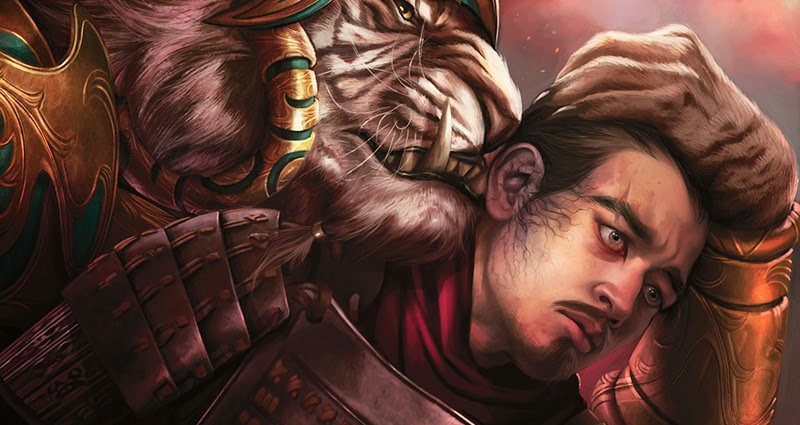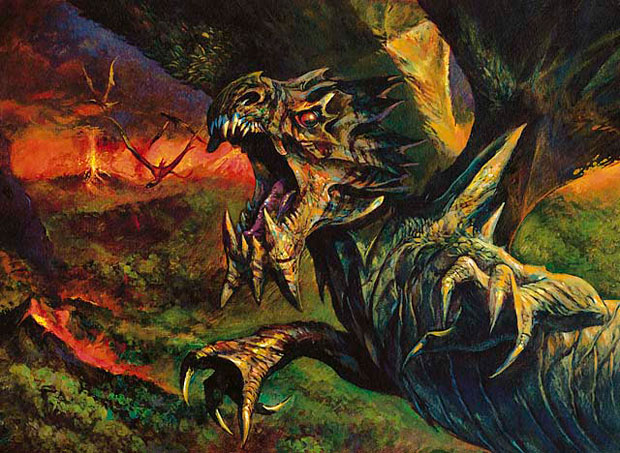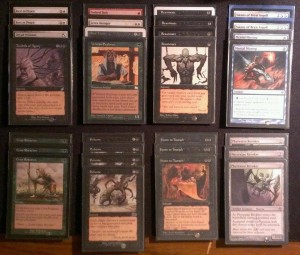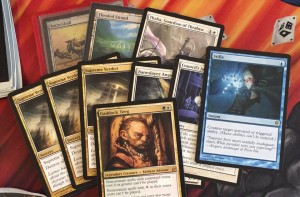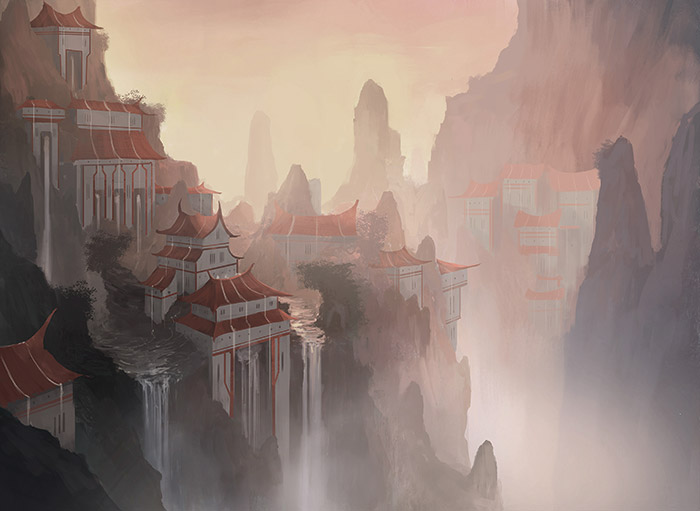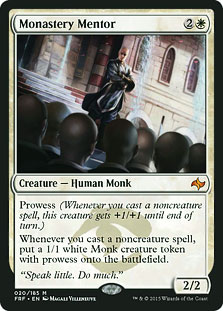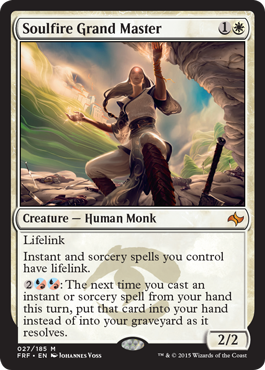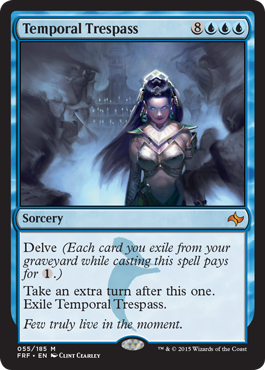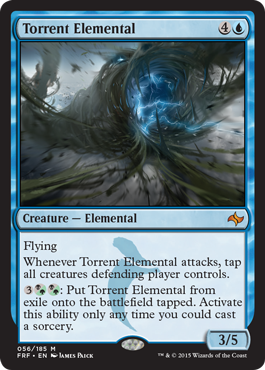By: Jared Yost
Fate Reforged spoilers have been released in full and this set is poised to make its impact on Standard. Instead of writing a detailed analysis of individual cards right away, I am going to give you my first impression of the set at this point based on comments I’ve seen around the web and my own thoughts. I’m going to keep the focus on discussing potential trends of cards from Khans of Tarkir, Theros Block, and M15, since Fate Reforged prices are mainly driven by hype at this point. Card by card analysis will come later this week from my fellow MTGPrice writers. If they leave out the uncommons and commons I can cover them later just like I did for Khans of Tarkir.
Manifest
Manifest is this set’s most unique keyword and it has brought something to the game that we haven’t seen before. I’ve heard plenty of dissenting voices saying that Manifest will not be that relevant but it is interesting enough to have potential. Whether or not it pans out remains to be seen, however some there some cards trending due to the revelation of Manifest.
Trail of Mystery – Several Magic financiers have noticed that Manifest has caused this card to become the most sought after trade on Puca Trade. Retail tells a different story, where the card hasn’t moved from its current price of $0.25 per copy. This is bulk rare status and can easily be negotiated as such in a trade. Trail of Mystery is definitely something to keep our eyes on as Standard adopts to Manifest. Even if it doesn’t turn out to be any good, casual players still seem to be getting behind the card due to its interaction with Manifest and I think the card has a chance of hitting $0.75 or more over the next month just due to this demand alone.
Hooded Hydra – Hooded Hydra has already jumped from $1.25 to $2.50 TCG Median. MTGPrice puts the current price of Hydra around $2 average. This tells me that casual players are targeting the Hydra in the hopes that they can create a Manifest deck that works well with the Hydra’s morph ability of putting five +1/+1 counters on itself when it becomes unmorphed. I admit, I get the feeling that there could be something to this in Standard. Yes, you have to jump through some hoops to get a decent return on this Manifest investment, but Fate Reforged is giving us Whisperwood Elemental.
I’m not saying that this card is the next Thragtusk, Huntmaster of the Fells, or Master of the Wild Hunt – there are some key differences here that make Whisperwood Elemental slightly worse. It has a higher mana cost without immediate impact by itself. If this is your only creature and your opponent has removal, you wasted turn five which is a critical turn in a format like Standard. It also has a higher color commitment since it requires two green to cast. This could limit it to only being found in fewer strategies that heavily focus on green.
On the plus side, Whisperwood Elemental combines the effects of Master of the Wild Hunt with Voice of Resurgence for all your other creatures in a tidy, neat package. Being 4/4 also helps it dodge many of the different types of removal in the format. I expect some pros to brew with Whisperwood Elemental, and if Hooded Hydra shows up in that deck somehow you can expect upward trends in the Hydra’s price over the coming weeks.
Finally, Master of Pearls is another card that gets much better with the Manifest mechanic and is trending right now on Puca Trade. How this card might fit into Manifest is hard to tell, since it appears on the surface to be an aggro creature, however I think it also could fit into a midrange deck if the synergy is powerful enough to pump all of your dudes for a game ending strike. For bulk, I don’t think there is much risk in picking up a playset.
Black / White Warriors Gets Support
A slightly more subtle trend that was also put into Fate Reforged is a warrior theme. Cards like Battle Brawler, Merciless Executioner, Mardu Shadowspear, Mardu Strike Leader, Mardu Woe-Reaper, and especially Brutal Hordechief all provide tools to make Warriors an archetype.
Currently existing cards that fit into this strategy include:
- Bloodsoaked Champion – Even though this was included in the Khans evet deck, this card probably has the best chance of being included in a warriors deck. Current sitting at around $1.50 TCG Median and $1.30 MTGPrice fair trade value, I don’t think you can go wrong with picking up your playset if the B/W Warriors strategy interests you.
- Athreos, God of Passage – Definitely a much pricier card to pick up, since this card is from a third set and getting harder to find. However, it has the chance of spiking out of nowhere if B/W Warriors becomes a mainstay after Fate Reforged is released. This is the only other god besides Pharika that costs three mana to play, and if the devotion count is reached with Athreos then it becomes and indestructible beat stick. The recursion choice for creatures with Athreos is also important since many of the creatures being played will be dying and possibly coming back if your opponent doesn’t pay the three life per creature.
- Chief of the Edge / Chief of the Scale – These picks might be stretching it, but they do seem pretty strong in an aggro deck of this type.
- Herald of Torment – Definitely a strong Bestow curve topper, though we haven’t seen Herald do so well in a field full of midrange. A strong aggro strategy could make this card shine. Herald is currently less than $1 right now, so buy in wise it doesn’t take much to pick up a playset.
- Dictate of Heliod – This is a strong pump effect that can come out of nowhere in the late game to help finish your opponent off. While current $0.42 fair trade on MTGPrice, retail you can find it much lower if you look around.
- Caves of Koilos – Currently sitting around $2.40 fair trade value, this land will be very important for fixing during those crucial early turns when you need to cast your spells on curve. Mana Confluence also fits into this category as well, however that land is currently sitting around $13 and won’t be going up much more even if a B/W Warriors deck is created. Caves, like Battlefield Forge and Llanowar Wastes, has a chance of going to $5 and beyond with a high finish from a warriors build.
These are just a few of the cards identified by others and myself as potential targets for inclusion in a warriors deck. Though the deck might not pan out, as the currently existing midrange strategies tend to blow aggro out of the water, similar to Manifest there could be some hype around the cards that show up in decks that do well the first few weekends that Fate Reforged is legal.
R/G Midrange Gets Support
Cards that potentially fit into existing R/G midrange strategies include Shaman of the Great Hunt and Shamanic Revelation.
R/G Midrange is a fine deck already, but having cards that enable card advantage and occasionally will enable life gain is something that can’t be overlooked. Take note that Shamanic Revelation is the buy-a-box promo from the set and that Shaman of the Great Hunt is quite an overpowered mythic if you can get it to stick for a few turns.
Cards that go well in these strategies include:
- Xenagos, the Reveler – Xenagos spiked earlier in the Standard season yet has gone down to only $6.25 fair trade price and TCG Median. Xenagos adds some punch to these strategies and could see a price uptick.
- Crater’s Claws – Could these new tools finally take Crater’s Claws to $2 and beyond? It is currently used as a finisher in R/G Midrange and might be played more if the deck is featured in a high level match at Pro Tour Fate Reforged.
- Ashcloud Phoenix – In addition to potential Manifest shenanigans, this card will continue to be in the R/G Midrange strategies as well. Appearances in both decks could bolster the card’s price.
- Rattleclaw Mystic – Very cheap price right now for a mana dork that provides Temur color fixing plus a Morph bonus. Again, Manifest possibilities aside, it is still a great card in its own right. I feel that $1.50 is very cheap for Rattleclaw right now and that it will be going up in price over the year.
U/B Control Gets Support
Cards that add to U/B Control’s repertoire include Crux of Fate, Ugin, the Spirit Dragon, and Silumgar, the Drifting Death.
The currently existing card to watch out for in U/B Control include Dig Through Time, Pearl Lake Ancient, and Perilous Vault. Another card with possibilities is Prognostic Sphinx if U/B Control shifts towards selecting it as their finisher. Though most would argue that Pearl Lake Ancient is superior, the metagame could shift in another direction and make the Sphinx shine instead however unlikely that may seem right now.
Last Thoughts
I’m no professional deck builder but I’m starting to see how the pieces of the puzzle might fit together. Depending on what type of Standard strategies start dominating after Fate Reforged is released could spell different price trajectories for different cards. If a whole new archetype spawns and is good, like the B/W Warriors deck that seems to be taking form through the collective Magic mind on the internet, then a whole slew of card prices may be affected. Even just slight modifications to existing archetypes could help other cards see a small bump in price, or even make other cards that were on the fence change in price one way or the other depending on if they make the cut or not in Fate Reforged Standard.
What cards do you foresee making an impact on Standard from Fate Reforged? What cards from other Standard sets do you see as important role players in the new Standard format?
One question that I didn’t address was if any Fate Reforged cards are eternal playable. Do you think any cards are eternal playable that should be discussed further?
Tune in later this week for in depth coverage of specific Fate Reforged cards and what their future price may hold.
